国际经济学克鲁格曼中文版第12章.pptx
- 格式:pptx
- 大小:1.16 MB
- 文档页数:42
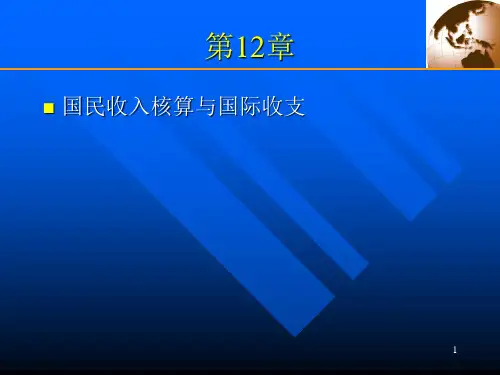
![国际经济学克鲁格曼版[]PPT课件](https://uimg.taocdn.com/90382b676c175f0e7dd1372e.webp)
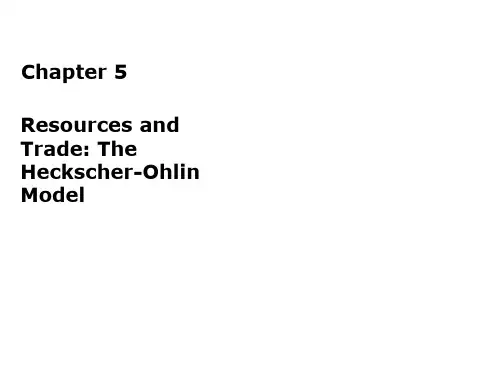


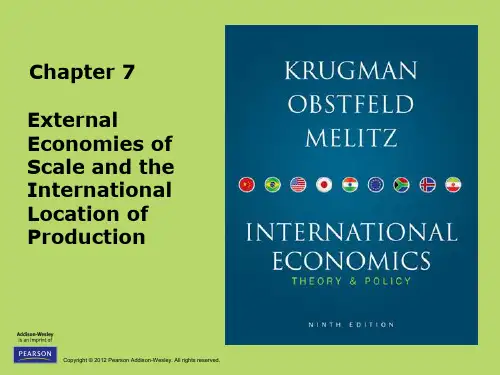
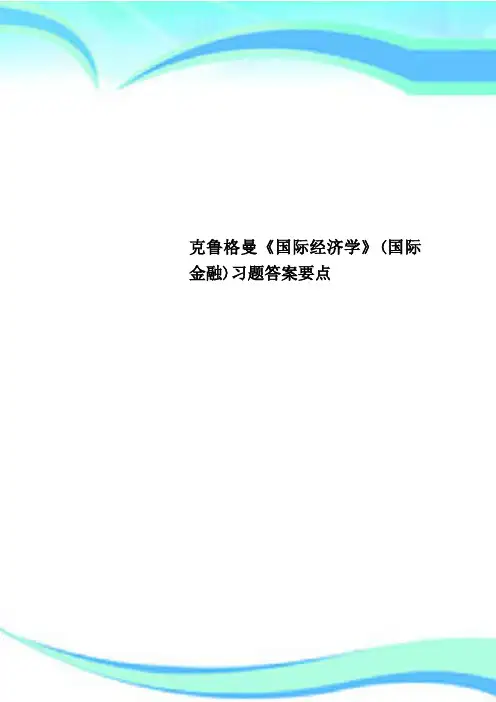
克鲁格曼《国际经济学》(国际金融)习题答案要点————————————————————————————————作者:————————————————————————————————日期:23 《国际经济学》(国际金融)习题答案要点第12章 国民收入核算与国际收支1、如问题所述,GNP 仅仅包括最终产品和服务的价值是为了避免重复计算的问题。
在国民收入账户中,如果进口的中间品价值从GNP 中减去,出口的中间品价值加到GNP 中,重复计算的问题将不会发生。
例如:美国分别销售钢材给日本的丰田公司和美国的通用汽车公司。
其中出售给通用公司的钢材,作为中间品其价值不被计算到美国的GNP 中。
出售给日本丰田公司的钢材,钢材价值通过丰田公司进入日本的GNP ,而最终没有进入美国的国民收入账户。
所以这部分由美国生产要素创造的中间品价值应该从日本的GNP 中减去,并加入美国的GNP 。
2、(1)等式12-2可以写成()()p CA S I T G =-+-。
美国更高的进口壁垒对私人储蓄、投资和政府赤字有比较小或没有影响。
(2)既然强制性的关税和配额对这些变量没有影响,所以贸易壁垒不能减少经常账户赤字。
不同情况对经常账户产生不同的影响。
例如,关税保护能提高被保护行业的投资,从而使经常账户恶化。
(当然,使幼稚产业有一个设备现代化机会的关税保护是合理的。
)同时,当对投资中间品实行关税保护时,由于受保护行业成本的提高可能使该行业投资下降,从而改善经常项目。
一般地,永久性和临时性的关税保护有不同的效果。
这个问题的要点是:政策影响经常账户方式需要进行一般均衡、宏观分析。
3、(1)、购买德国股票反映在美国金融项目的借方。
相应地,当美国人通过他的瑞士银行账户用支票支付时,因为他对瑞士请求权减少,故记入美国金融项目的贷方。
这是美国用一个外国资产交易另外一种外国资产的案例。
(2)、同样,购买德国股票反映在美国金融项目的借方。
当德国销售商将美国支票存入德国银行并且银行将这笔资金贷给德国进口商(此时,记入美国经常项目的贷方)或贷给个人或公司购买美国资产(此时,记入美国金融项目的贷方)。
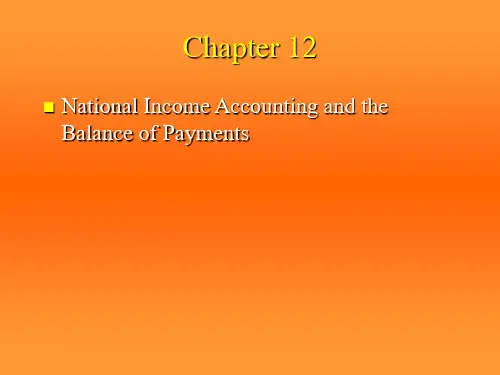
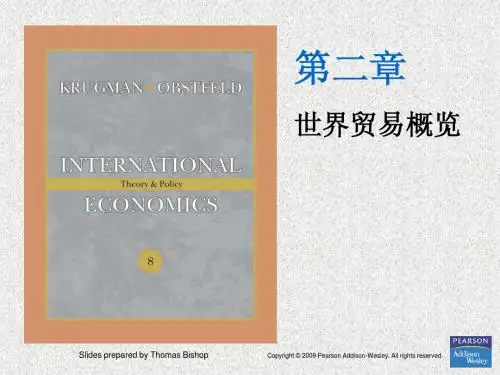
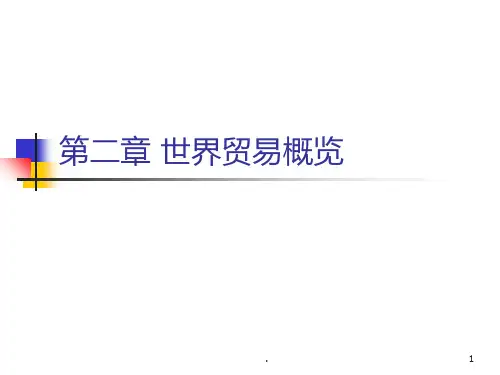

Chapter 12 第三题和第五题练习提示3. (a)Credit Debit An American buys a share of German stock(Financial account, U.S. asset import) -The American pays with a check on his Swiss bank account(Financial account, U.S. asset import) +(b) If the German stock seller deposits the U.S. check in its German bank,Credit Debit An American buys a share of German stock(Financial account, U.S. asset import) -The American pays with a check on his American bank account(Financial account, U.S. asset export) +(c)Credit Debit The sale of dollars by the Korean government(Financial account, U.S. asset export) -The Korean citizens who buy the dollars use them to buy American goods(Current account, U.S. goods export) +Credit Debit The sale of dollars by the Korean government(Financial account, U.S. asset export) -The Korean citizens who buy the dollars use them to buy American assets(Financial account, U.S. asset export) +(d) Suppose the company issuing the traveler’s check uses a checking account in France to make payments,Credit Debit The company issuing the traveler’s check pays the French restaurateur for the meal (Current account, U.S. service import) - Sale of claim on the company issuing the traveler’s check(Financial account, U.S. assets export) +(e)Credit Debit The California winemaker contributes a case of cabernet sauvignon abroad(Current account, U.S. unilateral current transfers) - Receivable of the California winemaker(Current account, U.S. goods export) +Credit Debit Receivable of the California winemaker(Current account, U.S. goods export) -The California winemaker contributes a case of cabernet sauvignon abroad(Current account, U.S. unilateral current transfers) +(f)Credit Debit The U.S. owned factory in Britain makes local earning(Current account, U.S. income receipts) +The U.S. owned factory in Britain deposits its local earning in a British bank(Financial account, U.S. asset import) -Credit Debit The U.S. owned factory in Britain uses its local earning to reinvest(Current account, U.S. income receipts) -The U.S. owned factory in Britain makes the payment for reinvestment(Financial account, U.S. asset import) +5.(a) Since Pecunia had a current account deficit of $1b and a nonreserve financial account surplus of $500m in 2002, the balance of Pecunia’s official reserve transaction should be +$500m as follow:Pecunia international transactionCredit Debit Current account -$1b Financial accountThe balance of Pecunia’s official reserve transaction +$500mThe balance of nonreserve assets +$500mThe balance of payment of Pecunia = the negative value of the balance of Pecunia’s official reserve transaction= -$500m.Pecunia had a financial account surplus of $1b in 2002; it implies Pecunia’s net foreign assets decreased by $1b in 2002.(b) Pecunian central bank had to sell $500m, so Pecunian central bank’s foreign reserves decreased by $500m:Pecunia international transactionCredit Debit Current account -$1b Financial accountPecunian official reserve assets +$500mForeign official reserve assets 0 0The balance of nonreserve assets +$500m(c) There was no need for Pecunian central bank to sell dollar, and Pecunian central bank’s foreign reserves increased by $100m as shown below:Pecunia international transactionCredit Debit Current account -$1b Financial accountPecunian official reserve assets -$100m Foreign official reserve assets + $600mThe balance of nonreserve assets +$500m(d)Pecunia international transactionCredit Debit Current account -$1b Financial accountPecunian official reserve assets -$100m Foreign official reserve assets + $600mThe balance of nonreserve assets +$500mThe following is for your reference:3.(a) The purchase of the German stock is a debit in the U.S. financial account. There is acorresponding credit in the U.S. financial account when the American pays witha check on his Swiss bank account because his claims on Switzerland fall by theamount of the check. This is a case in which an American trades one foreign assetfor another.(b) Again, there is a U.S. financial account debit as a result of the purchase of a Germanstock by an American. T he corresponding credit in this case occurs when theGerman seller deposits the U.S. check in its German bank and that bank lends themoney to a German importer (in which case the credit will be in the U.S. currentaccount) o r to an individual or corporation that purchases a U.S. asset (in whichcase the credit will be in the U.S. financial account). Ultimately, there will be someaction taken by the bank which results in a credit in the U.S. balance of payments.(c) The foreign exchange intervention by the French government involves the sale of aU.S. asset, the dollars it holds in the United States, and thus represents a debititem in the U.S. financial account. The French citizens who buy the dollars mayuse them to buy American goods, which would be an American current accountcredit,or an American asset, which would be an American financial accountcredit.(d) Suppose the company issuing the traveler’s check uses a checking account inFrance to make payments. When this company pays the French restaurateur for themeal, its payment represents a debit in the U.S. current account.The company issuing the traveler’s check must sell assets (deplete its checking account in France) to make this payment. This reduction in the French assetsowned by that company represents a credit in the American financial account.(e) There is no credit or debit in either the financial or the current account sincethere has been no market transaction.(f) There is no recording in the U.S. Balance of Payments of this offshore transaction.5.(a) Since non-central bank financial inflows fell short of the current-account deficit by$500 million, the balance of payments of Pecunia (official settlements balance) was–$500 million. The country as a whole somehow had to finance its $1 billioncurrent-account deficit, so Pecunia’s net foreign assets fell by $1 billion.(b) By dipping into its foreign reserves, the central bank of Pecunia financed theportion of the country’s current-account deficit not covered by private financialinflows. Only if foreign central banks had acquired Pecunian assets could thePecunian central bank have avoided using$500 million in reserves to complete the financing of the current account. Thus,Pecunia’s central bank lost $500 million in reserves, which would appear as anofficial financial inflow (of the same magnitude) in the country’s balance ofpayments accounts.(c) If foreign official capital inflows to Pecunia were $600 million, the Central Banknow increased its foreign assets by $100 million. Put another way, the countryneeded only $1 billion to cover its current-account deficit, but $1.1 billion flowed into the country (500 million private and600 million from foreign central banks). The Pecunian central bank must, therefore, have used the extra $100 million in foreign borrowing to increase its reserves. The balance of payments is still –500 million, but this is now comprised of 600 million in foreign Central Banks purchasing Pecunia assets and 100 million of Pecunia’s Central Bank purchasing foreign assets, as opposed to Pecunia selling 500 million in assets. Purchases of Pecunian assets by foreign central banks enter their countries’balance of payments accounts as outflows, which are debit items. The rationale is that the transactions result in foreign payments to the Pecunians who sell the assets.(d) Along with non-central bank transactions, the accounts would show an increase inforeign official reserve assets held in Pecunia of $600 million (a financial account credit, or inflow) and an increase Pecunian official reserve assets held abroad of $100 million (a financial account debit, or outflow). Of course, total net financial inflows of $1 billion just cover the current-account deficit.。
克鲁格曼《国际经济学》中文版·第九版课后习题答案第一章练习与答案1.为什么说在决定生产和消费时,相对价格比绝对价格更重要?答案提示:当生产处于生产边界线上,资源则得到了充分利用,这时,要想增加某一产品的生产,必须降低另一产品的生产,也就是说,增加某一产品的生产是有机会机本(或社会成本)的。
生产可能性边界上任何一点都表示生产效率和充分就业得以实现,但究竟选择哪一点,则还要看两个商品的相对价格,即它们在市场上的交换比率。
相对价格等于机会成本时,生产点在生产可能性边界上的位置也就确定了。
所以,在决定生产和消费时,相对价格比绝对价格更重要。
2.仿效图1—6和图1—7,试推导出Y商品的国民供给曲线和国民需求曲线。
答案提示:3.在只有两种商品的情况下,当一个商品达到均衡时,另外一个商品是否也同时达到均衡?试解释原因。
答案提示:4.如果生产可能性边界是一条直线,试确定过剩供给(或需求)曲线。
答案提示:5.如果改用Y商品的过剩供给曲线(B国)和过剩需求曲线(A国)来确定国际均衡价格,那么所得出的结果与图1—13中的结果是否一致?答案提示:国际均衡价格将依旧处于贸易前两国相对价格的中间某点。
6.说明贸易条件变化如何影响国际贸易利益在两国间的分配。
答案提示:一国出口产品价格的相对上升意味着此国可以用较少的出口换得较多的进口产品,有利于此国贸易利益的获得,不过,出口价格上升将不利于出口数量的增加,有损于出口国的贸易利益;与此类似,出口商品价格的下降有利于出口商品数量的增加,但是这意味着此国用较多的出口换得较少的进口产品。
对于进口国来讲,贸易条件变化对国际贸易利益的影响是相反的。
7.如果国际贸易发生在一个大国和一个小国之间,那么贸易后,国际相对价格更接近于哪一个国家在封闭下的相对价格水平?答案提示:贸易后,国际相对价格将更接近于大国在封闭下的相对价格水平。
8.根据上一题的答案,你认为哪个国家在国际贸易中福利改善程度更为明显些?答案提示:小国。